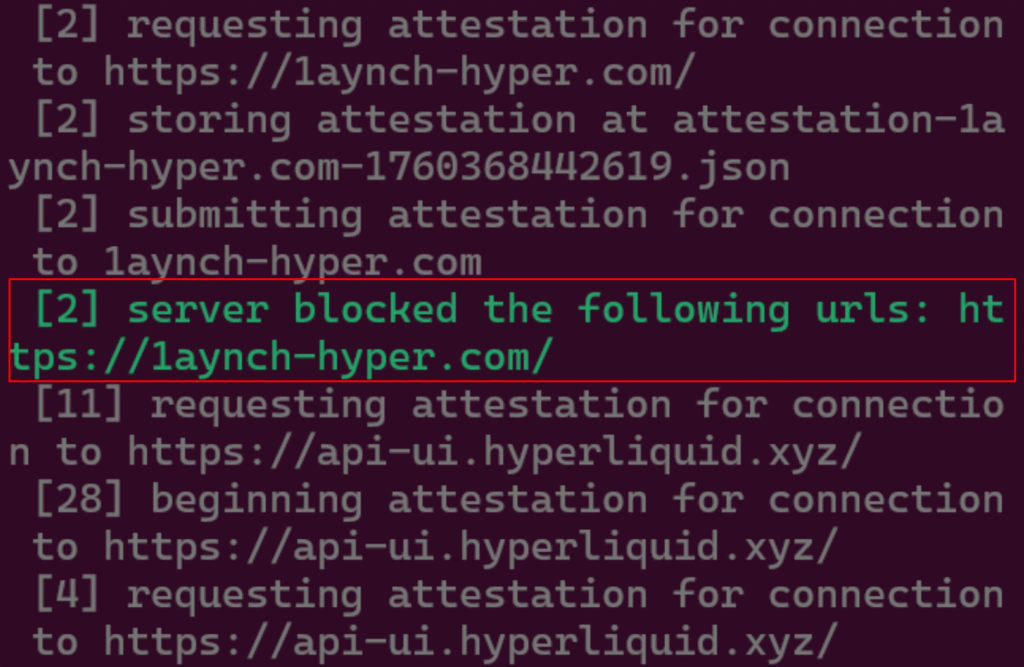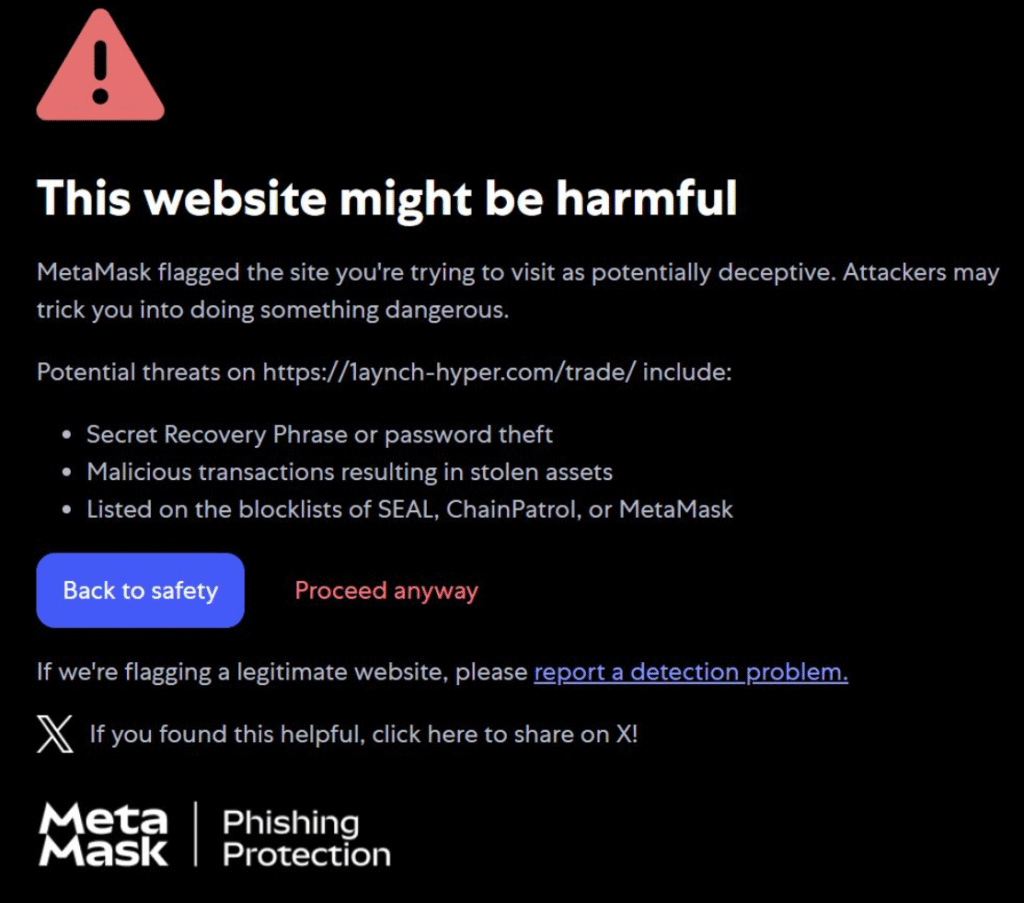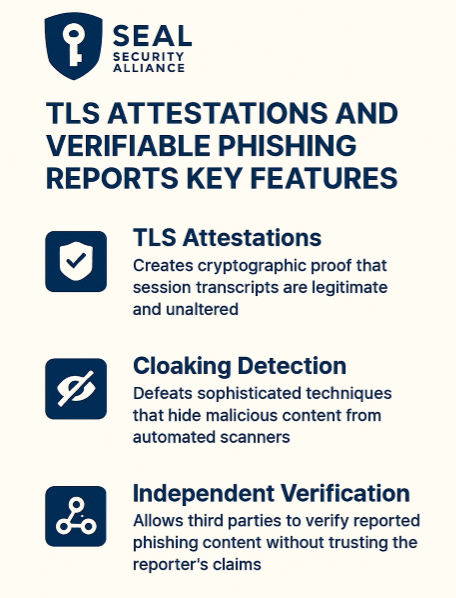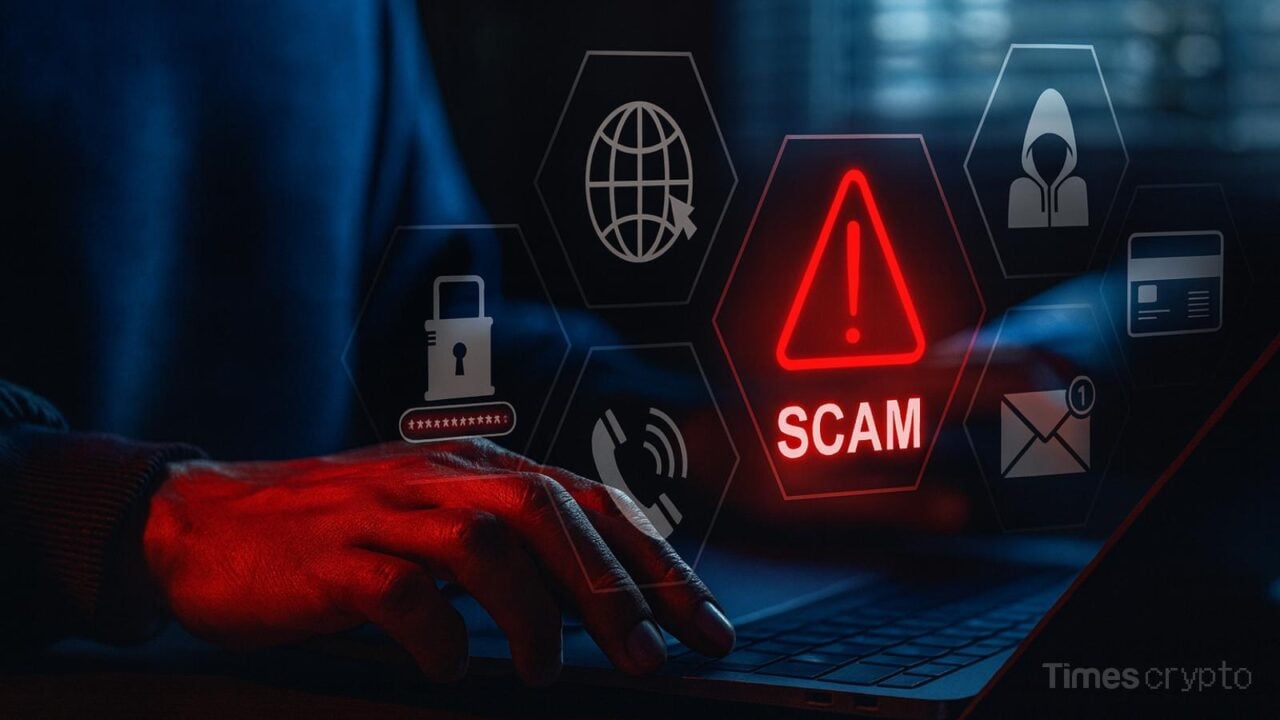Key Takeaways
- The new fight phishing scams tool uses Transport Layer Security (TLS) attestations to cryptographically verify malicious website content.
- It specifically targets “cloaking” techniques that show benign content to automated scanners but malicious pages to real victims.
- The system allows ethical hackers to submit verified reports with cryptographic proof of what actual users would see.
Table of Contents
Cryptographic Solution to Phishing Detection
The Security Alliance (SEAL) has launched an innovative fight phishing scams tool that addresses a fundamental challenge in cybersecurity: verifying that reported malicious websites actually display harmful content to real users. Traditional automated scanners often fail against more sophisticated “cloaking” techniques in which scammers serve benign content to detection bots while showing phishing pages to potential victims. This new phishing scam tool uses Transport Layer Security (TLS) attestations, in short, aTLS, to create cryptographic proof of what genuine users experience, ensuring reports contain verifiable evidence rather than relying on potentially manipulated data.


Read also: Cybercrime Alarm: GreedyBear Hackers Steal $1M Via Weaponized Firefox Extensions
How TLS Attestations Defeat Advanced Scams
The fight phishing scams tool works by having users run a client-side HTTP proxy that collaborates with SEAL’s attestation server to generate signed cryptographic proof of TLS sessions. This approach prevents scammers from manipulating what security researchers see versus what victims encounter. The system specifically defeats JA3/JA4 fingerprinting techniques that scammers use to identify and block automated scanners. This will create a more reliable mechanism to determine phishing campaigns directed towards crypto users, while orchestrating the interaction across the entire ecosystem.

Read also: BDIC Launches Crypto Insurance: Stablecoins Get FDIC-Style Protection
Strengthening Crypto Security Infrastructure
This advanced fight phishing scams tool comes as phishing attacks are at a troubling rate, with the Anti-Phishing Working Group tracking over 1.1 million attacks in Q2 2025 alone.
With support from major organizations, such as a16z crypto and the Ethereum Foundation, the SEAL team and their powerful solution represent a significant step forward in combating the estimated $395 million lost to phishing in Q2 2025.
This innovative tool puts cryptographic verification in front of malicious material, providing a more effective way of identification and response to phishing campaigns, ultimately creating improved security for the broader crypto ecosystem that is much in need of these types of solutions.
FAQs
How does this SEAL’s new fight phishing scams tool differ from traditional phishing detection?
It uses cryptographic attestations to prove what real users see, defeating “cloaking” techniques that fool automated scanners by showing them fake benign content.
What are TLS attestations (aTLS)?
They’re cryptographic proofs that verify the legitimacy of Transport Layer Security (TLS) session transcripts, preventing manipulation of what servers actually send to clients.
Who can use this Verifiable Phishing Reporter tool?
Currently designed for security researchers and advanced users, though SEAL aims to expand accessibility as the technology matures.
For more innovative solutions against crypto crime, read: Beacon Network: TRM Labs to Combat Crypto Theft by Freezing Stolen Funds Instantly







